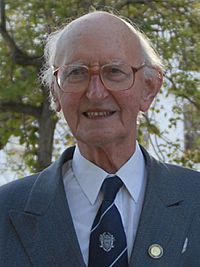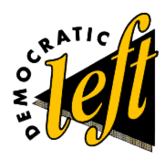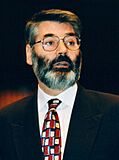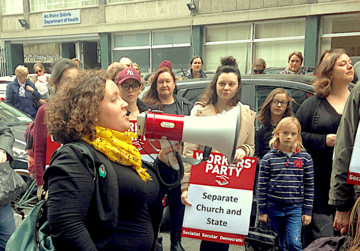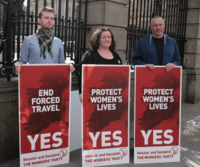Workers' Party (Ireland) facts for kids
Quick facts for kids
The Workers' Party
Páirtí na nOibrithe
|
|
|---|---|
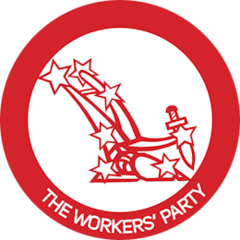 |
|
| President | Michael McCorry (disputed) |
| Founded | 17 January 1970 |
| Split from | Sinn Féin |
| Headquarters | 8 Cabra Road, Dublin 7, Ireland |
| Youth wing | Workers' Party Youth |
| Ideology | Communism Marxism–Leninism Irish republicanism |
| Political position | Far-left |
| European affiliation | INITIATIVE (2013–2023) |
| International affiliation | IMCWP WAP (disputed) ECA (disputed) |
| Colours | Red |
The Workers' Party (Irish: Páirtí na nOibrithe) is a political party active in both the Republic of Ireland and Northern Ireland. It believes in a united Ireland and a society where everyone is equal.
The party used to say it came from the original Sinn Féin party, started in 1905. It took its current shape in 1970 after a split within Sinn Féin. Most members of the party wanted to follow ideas about equality for all. It was first known as Sinn Féin (Gardiner Place) or Official Sinn Féin. This helped tell it apart from another group called "Provisional Sinn Féin".
The party changed its name to Sinn Féin The Workers' Party in 1977. Then, in 1982, it became simply the Workers' Party. The other group, Provisional Sinn Féin, became known just as Sinn Féin. Both groups were linked to armed groups. Official Sinn Féin was linked to the Official Irish Republican Army.
By the late 1980s, the party was doing well in elections in the Republic of Ireland. At its best, it had 7 members elected to the Dáil (Irish parliament) in 1989. It also had 21 local councillors in 1991. However, after the fall of the Berlin Wall and the end of the Soviet Union in the early 1990s, most of the party's elected members left. They formed a new party called Democratic Left in 1992. Since 1992, the Workers' Party has been a smaller party. A disagreement in 2021 led to a split, and the party's leadership is now disputed.
Party Name Changes
In 1971, the party registered to take part in elections in the Republic of Ireland as Sinn Féin. In the early to mid-1970s, it was called Official Sinn Féin or Sinn Féin (Gardiner Place). This was to tell it apart from the other group, Provisional Sinn Féin. Gardiner Place was the main office for Sinn Féin for many years before the 1970 split.
At its big meeting in January 1977, Official Sinn Féin changed its name to Sinn Féin – The Workers' Party. It won its first seats in the Dáil Éireann (Irish parliament) under this new name. In 1979, there was a vote to remove "Sinn Féin" from the name, but it was just barely defeated. This change happened three years later.
In Northern Ireland, Sinn Féin was known as Republican Clubs. This was to get around a rule that banned Sinn Féin candidates. The party kept using this name after 1970, and later used Workers' Party Republican Clubs. In 1982, both the northern and southern parts of the party became The Workers' Party.
Sometimes, the Workers' Party is called the "Sticks" or "Stickies". This is because in the 1970s, they used sticky badges for the Easter Lily symbol. The Provisional Sinn Féin group used a pin for theirs.
Party History
How the Party Started
The party's modern story began in the early 1960s. After the IRA's border campaign ended in 1962, the republican movement looked at its goals again. During the 1960s, some leaders, like Cathal Goulding and Tomás Mac Giolla, started to lean towards ideas of equality for all. This made some traditional republicans unhappy, as they wanted to focus only on Irish independence and armed struggle.
This new way of thinking saw the main problem for Irish unity as the division between Protestant and Catholic working people. They believed this division was caused by policies that kept people apart. They thought that military actions made these divisions worse. The left-wing group believed that working people could unite to create a 32-county socialist republic, where everyone was equal.
However, many traditional republicans did not like these ideas. They also criticized the party's leaders for not protecting Catholic areas in Northern Ireland from attacks. Another big debate was whether elected members should take their seats in British or Irish parliaments. Most of the leaders wanted to stop refusing to take their seats.
In 1969, a group formed a "Provisional Army Council." At a Sinn Féin meeting in 1970, the leaders could not get enough votes to change the rule about not taking seats in parliament. After this, Ruairí Ó Brádaigh led a group that walked out. They announced the start of a "caretaker" Sinn Féin group. This new group became known as the "Provisional Army Council" and its political and armed parts as Sinn Féin and the Provisional IRA. Those who stayed became Official Sinn Féin and the Official IRA. Official Sinn Féin, led by Tomás Mac Giolla, stayed linked to the Official IRA.
A main reason for the split was that the Provisionals wanted military action to be the most important goal. They felt the old leaders were replacing traditional Irish goals with "foreign socialism."
In 1977, Official Sinn Féin officially changed its name to "Sinn Féin The Workers' Party." In April 1982, the party became simply the Workers' Party.
Political Growth
Official IRA Ceasefire
Even though the Official IRA was involved in the early violence in Northern Ireland, it quickly stopped its armed actions against the United Kingdom's forces. It announced a permanent ceasefire in May 1972. After this, the party focused more on political development throughout the 1970s.
The party believed its main job was to fight against religious divisions. Their plan was to first unite working people in Northern Ireland. Then, they wanted to create a united Ireland. Finally, they aimed for a socialist society in Ireland, where everyone was equal.
IRSP/INLA Split
In 1974, the Official Republican Movement split again. This led to the creation of the Irish Republican Socialist Party (IRSP) and its armed group, the Irish National Liberation Army (INLA). There were some violent clashes between the groups until they agreed to a truce in 1977.
In 1977, the party published a document called Irish Industrial Revolution. It explained the party's economic ideas. It said that the violence in Northern Ireland was "distracting working class attention from the class struggle." The document used ideas about how big businesses and powerful countries influenced Ireland.
Official Sinn Féin became very critical of the armed actions still supported by Provisional Sinn Féin. Their new approach to the Northern conflict was "Peace, Democracy, Class Politics." They wanted to replace religious divisions with a focus on class struggle, uniting Catholic and Protestant workers. The party also built friendly relationships with the Soviet Union and other similar parties around the world.
Throughout the 1980s, the party strongly opposed armed political actions. They even suggested working with British security forces, which was a controversial idea. They were one of the few left-wing groups in Ireland to oppose the 1981 Irish hunger strike.
The Workers' Party also criticized traditional Irish republicanism. Some critics even said their views on Northern Ireland were similar to those who wanted to stay part of the UK.
Secret Group in RTÉ
The party had a secret group called the Ned Stapleton Cumann (club) inside RTÉ, Ireland's national broadcaster. This group started in the early 1970s and included RTÉ employees, many of whom were journalists. Members included Charlie Bird and Marian Finucane. This group worked secretly until the Workers' Party split in the early 1990s. It was important for them to stay secret because RTÉ reporters were not allowed to be openly involved with political parties.
The group influenced RTÉ's programs. They pushed for stories that matched the Workers' Party's views, especially about the Provisional IRA. For example, on the show Today Tonight, they made sure party members appeared without saying they were part of the party. They also influenced The Late Late Show by placing party activists in the studio audience.
During the 1981 Irish hunger strike, the group was unhappy with the positive news coverage the hunger strikers received. In response, they created stories that focused on the victims of violence by the Provisional IRA.
1992 Split: Workers' Party and Democratic Left
In early 1992, six of the party's seven members in the Dáil, its member of the European Parliament, many local councillors, and a large number of members left. They formed Democratic Left. This new party later joined with the Labour Party in 1999.
There were two main reasons for this split. First, a group led by Proinsias De Rossa wanted the party to accept more free-market economic ideas. After the end of communism in Eastern Europe, they felt the Workers' Party's old ideas were stopping them from winning more votes. Second, there were new media reports that the Official IRA was still armed and involved in illegal activities like robberies and money laundering.
De Rossa and his supporters wanted to distance themselves from these alleged activities. At a special meeting in February 1992, they proposed changes to the party's structure. The motion received 61% of the votes, but this was not enough to change the party's rules (which needed two-thirds). The Workers' Party later said there was cheating in the vote. Because the motion failed, De Rossa and his supporters left and formed a new party, first called "New Agenda" and then "Democratic Left." In the South, the Workers' Party was left with only seven councillors and one member in the Dáil.
In Northern Ireland, before the 1992 split, the party had four councillors. Three of them left to join the new group.
While most elected members left with De Rossa, many members stayed with the Workers' Party. Sean Garland called those who left "careerists" who ran away after the Soviet Union collapsed. Marian Donnelly became president from 1992 to 1994. Tom French was president from 1994 to 1998, followed by Sean Garland until 2008. Mick Finnegan was president until 2014, when Michael Donnelly took over.
There were other smaller splits. Some members left to form Republican Left. Another split happened in 1998 when some former Official IRA members formed the Official Republican Movement. This group announced in 2010 that it had given up its weapons.
21st Century Activities
Since the early 1990s, the Workers' Party has worked to grow again in both parts of Ireland. It has a youth group, Workers' Party Youth, and a Women's Committee. It also has offices in Dublin, Belfast, Cork, and Waterford. The party sends groups to international meetings of similar parties.
The party supported an independent candidate, John Gilliland, in the 2004 European elections in Northern Ireland.
Waterford City was a strong area for the party in the 1990s and early 2000s. In 2008, John Halligan from Waterford left the party because it would not change its view on service charges. He was later elected to the Dáil in 2011. The party's last councillor in Waterford lost his seat in the 2014 local elections.
Michael Donnelly, a university lecturer from Galway, became the party President in September 2014.
The Workers' Party asked people to vote No against the Treaty of Lisbon in both the 2008 and 2009 referendums. It was the only left-wing party to campaign for a No vote in the 2013 referendum to get rid of the Seanad (Irish Senate). It asked for a Yes vote in the 2015 referendum on marriage equality. The party supported Brexit in the 2016 UK referendum.
The party has been involved in campaigns for public housing and renters' rights. In 2016, the party suggested a plan for public housing in Ireland. Later that year, a Workers' Party idea for mixed-income public housing in Dublin was passed by city councillors. However, a government minister later overturned this decision.
The party believes in a society separate from religious control. In April 2017, Councillor Éilis Ryan organized a protest against a religious group controlling the new National Maternity Hospital. The Workers' Party campaigned for a yes vote in the May 2018 referendum to change the Eighth amendment. It was the only party in the Dáil to oppose the Eighth amendment when it was first introduced in 1983.
In the 2019 local elections, Éilís Ryan lost her seat in Dublin. This left Ted Tynan as the party's only elected representative in Ireland.
In November 2020, it was announced that the Workers' Party was one of five parties that did not provide their financial accounts for 2019.
2021 Split
In April 2021, a magazine reported that the party voted to remove its only elected representative, Ted Tynan. The party itself disputes this. In response, a group within the party held an emergency meeting. They voted that they no longer trusted party president Michael Donnelly and chose Tynan as his replacement. Michael McCorry became president of the Donnelly group, while Tynan leads the other group.
A newspaper also reported in April 2021 that one group tried to remove Tynan because he had not paid his membership fee. However, Tynan said he believed the real reason was that new members wanted the party to support more Irish Republican ideas, like having a vote on Irish reunification. Historically, the Workers' Party opposed such a vote, saying it would cause divisions. Tynan and his supporters want to keep the old position. Both groups claim the right to use the 'Workers' Party' name. The Tynan-led party uses a logo with two clasped hands. The McCorry-led party uses the 'starry plough' logo and has brought back the 'Republican Clubs' name in Northern Ireland.
Nuclear Power Views
In 2023, the Workers' Party released a policy document called "Lets Get Real." It stated that nuclear power is the only energy choice for Ireland that is reliable, affordable, and produces low carbon.
The party suggests Ireland should build 6 nuclear power plants at 2 or 3 locations. They estimate this would cost around €50 billion.
Election Results
Republic of Ireland Elections
The Workers' Party first won a seat in the Dáil in 1981, when Joe Sherlock was elected. It increased to three seats in 1982 and four seats in 1987. The party had its best election in 1989, winning seven seats in the general election. Party president Proinsias De Rossa also won a seat in the European election that same day.
After the split of 1992, Tomás Mac Giolla was the only Dáil member who did not join the new Democratic Left party. Mac Giolla lost his seat in the general election later that year. No one from the party has been elected to the Dáil since then. However, the Workers' Party kept some local councillors in Dublin, Cork, and Waterford after the split. Mac Giolla was even elected Lord Mayor of Dublin in 1993.
Outside of the south-east, the Workers' Party still has active groups in areas like Dublin, Cork, and County Meath. In the 1999 local elections, it lost all its seats in Dublin and Cork, keeping only three in Waterford City. More election losses and a small split meant that after the 2004 local elections, the party had only two councillors, both in Waterford.
The party had twelve candidates in the 2009 local elections. Ted Tynan was elected to Cork City Council. Davy Walsh kept his seat in Waterford City Council. In the 2014 local elections, Tynan kept his seat, but Walsh lost his. In January 2015, independent councillor Éilis Ryan in Dublin joined the party.
In the 2011 general election, the Workers' Party had six candidates, but none were successful. In the 2016 general election, the party had five candidates, again without success.
In the 2019 local elections, the party was left with only one councillor, as Éilís Ryan lost her seat in Dublin.
Dáil Éireann Elections
| Election | Leader | Seats won | ± | Position | First pref. votes | % | Government |
|---|---|---|---|---|---|---|---|
| 1973 as SF |
Tomás Mac Giolla |
0 / 144
|
4th | 15,366 | 1.1% | No Seats | |
| 1977 as SFWP |
0 / 148
|
4th | 27,209 | 1.7% | No Seats | ||
| 1981 as SFWP |
1 / 166
|
5th | 29,561 | 1.7% | Opposition (Did not vote in formation vote on minority FG/Lab government) |
||
| Feb 1982 as SFWP |
3 / 166
|
4th | 38,088 | 2.3% | Opposition (Supported minority FF government) |
||
| Nov 1982 |
2 / 166
|
4th | 54,888 | 3.3% | Opposition | ||
| 1987 |
4 / 166
|
5th | 67,273 | 3.8% | Opposition | ||
| 1989 | Proinsias De Rossa |
7 / 166
|
4th | 82,263 | 5.0% | Opposition | |
| 1992 | Tomás Mac Giolla |
0 / 166
|
8th | 11,533 | 0.7% | No Seats | |
| 1997 | Tom French |
0 / 166
|
11th | 7,808 | 0.4% | No Seats | |
| 2002 | Seán Garland |
0 / 166
|
9th | 4,012 | 0.2% | No Seats | |
| 2007 |
0 / 166
|
9th | 3,026 | 0.1% | No Seats | ||
| 2011 | Mick Finnegan |
0 / 166
|
10th | 3,056 | 0.1% | No Seats | |
| 2016 | Michael Donnelly |
0 / 158
|
11th | 3,242 | 0.2% | No Seats | |
| 2020 |
0 / 158
|
14th | 1,195 | 0.1% | No Seats |
Irish Local Elections
| Election | Seats won | ± | First pref. votes | % | ± |
|---|---|---|---|---|---|
| 1974 as SF (Officials) |
6 / 805
|
New | 16,623 | 1.3% | New |
| 1979 as SFWP |
7 / 769
|
31,238 | 2.3% | ||
| 1985 |
20 / 828
|
43,006 | 3.0% | ||
| 1991 |
24 / 883
|
50,996 | 3.6% | ||
| 1999 |
3 / 1,627
|
6,847 | 0.5% | ||
| 2004 |
2 / 1,627
|
4,170 | 0.2% | ||
| 2009 |
2 / 1,627
|
4,771 | 0.3% | ||
| 2014 |
1 / 949
|
3,147 | 0.18% | ||
| 2019 |
1 / 949
|
2,620 | 0.15% | ||
| 2024 |
0 / 949
|
1,700 |
Northern Ireland Elections
The party won ten seats in the 1973 Northern Ireland local elections. In the 1977 local elections, this dropped to six council seats and 2.6% of the vote. One of their best results was when Tom French received 19% of the vote in a 1986 election. However, a year later, when other parties also ran, he only got 4.7% of the vote.
Three councillors left the party during the 1992 split. The party kept one council seat in the 1993 local elections. This seat was lost in 1997, leaving them with no elected representatives in Northern Ireland.
The party did not do well in the 2007 Assembly election. It won no seats. The party did not have any candidates in the 2010 UK general election. In the 2011 Assembly election, the Workers' Party ran in four areas.
The party ran candidates in Northern Ireland for the 2015 UK general election, the first time in ten years. It had five candidates and received 2,724 votes. The party did not have candidates in the 2019 UK general election. In June 2020, the party announced that its Northern Ireland committee had split from the party.
The party ran in the 2022 Northern Ireland Assembly election, receiving 839 votes.
Assembly Elections
| Election | Seats won | ± | % | First pref. votes |
|---|---|---|---|---|
| 1973 |
0 / 90
|
1.8 | 13,064 | |
| 1975 |
0 / 90
|
2.2 | 14,515 | |
| 1982 |
0 / 90
|
2.7 | 17,216 | |
| 1996 |
0 / 90
|
0.5 | 3,530 | |
| 1998 |
0 / 90
|
0.25 | 1,989 | |
| 2003 |
0 / 90
|
0.27 | 1,881 | |
| 2007 |
0 / 90
|
0.14 | 975 | |
| 2011 |
0 / 90
|
0.17 | 1,155 | |
| 2016 |
0 / 90
|
0.23 | 1,565 | |
| 2017 |
0 / 90
|
0.16 | 1,261 | |
| 2022 |
0 / 90
|
0.10 | 839 |
Northern Ireland Local Elections
| Year | Seats | ± | First Pref. votes | FPv% | ± |
|---|---|---|---|---|---|
| 1973 as RC |
8 / 526
|
New | 20,680 | 3% | New |
| 1977 as RC |
6 / 526
|
14,277 | 2.56% | ||
| 1981 as WP-RC |
3 / 526
|
12,059 | 1.81% | ||
| 1985 |
4 / 565
|
10,415 | 1.63% | ||
| 1989 |
4 / 582
|
13,078 | 2.12% | ||
| 1993 |
1 / 582
|
4,827 | 0.77% | ||
| 1997 |
0 / 462
|
2,348 | 0.37% | ||
| 2001 |
0 / 462
|
1,421 | 0.18% | ||
| 2005 |
0 / 462
|
1,052 | 0.15% | ||
| 2011 |
0 / 462
|
760 | 0.12% | ||
| 2014 |
0 / 462
|
985 | 0.16% | ||
| 2019 |
0 / 462
|
868 | 0.13% | ||
| 2023 |
0 / 462
|
678 | 0.09% |
Party Leaders
| Leader | Portrait | Period |
|---|---|---|
| Tomás Mac Giolla |
|
1962–1988 |
| Proinsias De Rossa |
|
1988–1992 |
| Marian Donnelly |
|
1992–1994 |
| Tom French |
|
1994–1998 |
| Seán Garland |
|
1998–2008 |
| Mick Finnegan |
|
2008–2014 |
| Michael Donnelly |
|
2014–2021 |
| Disputed between Michael McCorry and Ted Tynan |
|
2021–present |


